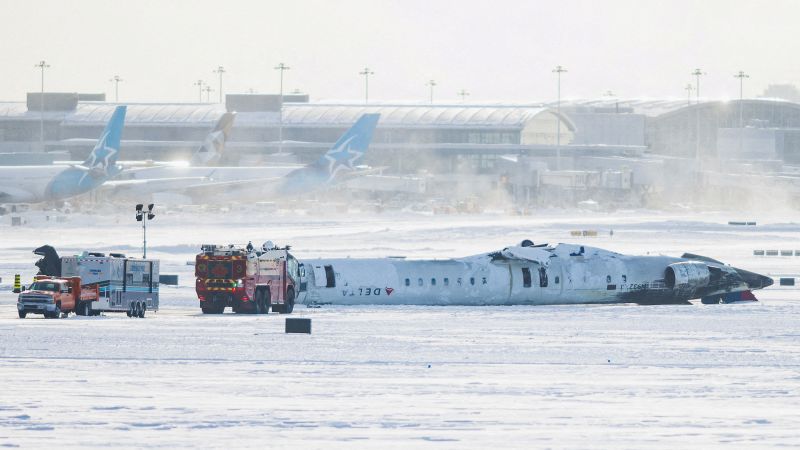CNN
—
The crash landing of Delta Air Lines flight 4819 in Toronto is some of the scariest video I’ve ever seen. While thankfully there were no fatalities, videos like that are the stuff that nightmares are made of.
Monday’s crash landing doesn’t feel like an isolated incident, especially after last month’s collision of an American Airlines plane and a US Army helicopter that left 67 dead. It feels like the skies are becoming more dangerous.
But sometimes feelings can be deceiving. A look at the statistics suggests that the skies are about as friendly as they’ve ever been.
Take a look at January’s preliminary data from the National Transportation Safety Board.
It appears that last month there was a record low number of airplane accidents nationwide, when combining private and commercial airline flights. Most of the 62 total airplane accidents were on private flights, and that total number was 18 less than the 80 recorded in January 2024.
In fact, if the preliminary numbers hold, January 2025 will surpass the previous record for the lowest number of total accidents, with eight fewer than the prior record low of 70 from January 2012.
Ten of the accidents in January 2025 were, unfortunately, fatal, and one of those fatal incidents involved a commercial airliner. Obviously, any number above zero is too many, but 10 overall is an incredibly low number, historically speaking.
And the number of fatal accidents nationwide last month could tie with 2022 for the safest January on record.
January 2025’s safety record isn’t a statistical anomaly, either. I’ve previously noted how commercial air travel in the United States has been safer than ever before. There have been fewer fatalities on scheduled commercial airliners over the last 15 years than any other 15-year stretch. And, though it’s almost become a mantra among the airline industry at this point, for each mile traveled commercial airliners are far safer than cars.
Indeed, the trendline is pretty much the same when combining private and commercial air travel: Last year had fewer accidents, and fewer fatal accidents – 257 – than any prior year. It’s a long-term trend, too, with fewer accidents recorded in each of the past 12 years than in any previous year dating back to at least 1982.
The only three years with fewer than 300 fatal accidents have all occurred in the 2020s. It’s a drastic improvement from historical records, too, as back in 1982 and 1983, there were over 600 fatal accidents.
Of course, what stands out about January and the crash in Toronto is that they involved commercial airliners. The vast majority of crashes are private small planes, so they don’t get much press.
Riding in a small private plane is significantly less safe.
But, as my colleague Chris Isidore noted to me, one or two horrible incidents doesn’t really say as much about the broader industry as you might believe. When you have about 9 million commercial flights operated by US airlines each year, one or two extra accidents in a given year is not statistically significant.
But even the near misses aren’t as frequent as you might think. I can recall two years ago that there was a freakout over near misses.
In 2023, 23 runway incursions (i.e. something was on the runway when it shouldn’t have been) were labeled as serious incidents. That was more that at any other point over the past decade.
You might have noted fewer people were talking about runway incursions in 2024. The reason was simple: the number of serious runway incursions fell to just seven in 2024. That was not only a major decline from 2023, but the fewest number of runway incursions in the previous decade.
Just two of the most serious type of near miss, in which a collision was narrowly avoided, occurred in 2024, which again was the lowest of the last decade.
So where does this leave us? No mode of transportation is going to be 100% safe. We have to remain vigilant that air travel is as safe as it can be. What has happened over the last month has been scary and, in some cases, tragic.
Still, when you put it all together, airplane travel is among the safest ways to get around. The numbers, no matter how you crack them, show it has only become safer in recent years.





